How to Use a Weeder Effectively and Safely
Gardening is a fantastic activity that can be quite enjoyable, but it also has its share of difficulties, especially when dealing with invasive weeds. Weeds not only compete with prized plants for nutrients and sunlight but also mar the overall aesthetics of a garden. To maintain a thriving and beautiful garden, having the right tools at one’s disposal is essential, and one such indispensable tool is the weeder.
A weeder is a simple yet effective tool designed to remove weeds from a garden or lawn easily. However, like any tool, using a weeder effectively and safely requires some knowledge and technique. In this article, the basic steps of how to use a weeder effectively and safely will be covered, along with Bebest’s tips and precautions to avoid injury or damage to plants.

How to Use a Hand Weeder
A hand weeder is indeed an invaluable tool for maintaining the pristine beauty of your garden or lawn, as it efficiently eliminates those unwanted and pesky plants that threaten to disrupt your garden.
This simple yet effective device, featuring a forked tip, is specifically designed to extract the roots of weeds, ensuring they won’t resurface and mar the appeal of your outdoor space. To make the most of this gardening essential, follow these comprehensive steps:
Step 1: Moistening the Soil
To moisten the soil for weeding, you can water the soil with a garden hose or irrigation system if there is minimal rainfall. This initial step significantly facilitates the extraction of weeds without risking damage to their resilient roots. Use a hose, a watering can, or just wait until the soil has been sufficiently moistened by a little rain to do this.
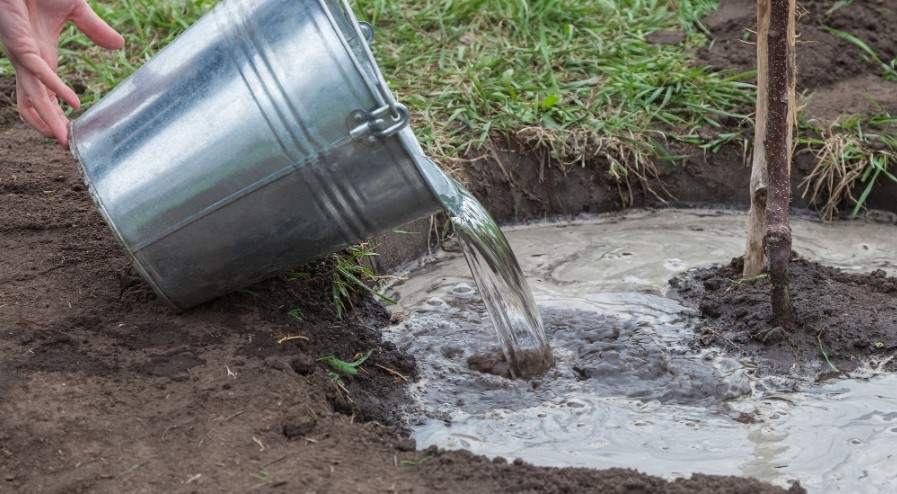
Step 2: Wearing Gardening Gloves
Wear a snug pair of gardening gloves to protect your hands from dirt, thorns, and potential skin irritants. Comfort is key during your gardening tasks. These gloves will ensure your hands stay clean and well-protected throughout the process.

Step 3: Employing a Kneeling Pad
Enhance your comfort and prevent knee strain or injury by utilizing a kneeling pad. Whether it’s a purpose-built commercial pad, a folded towel, or even a piece of cardboard, this cushioning will make the weeding experience far more pleasant on your knees and joints.
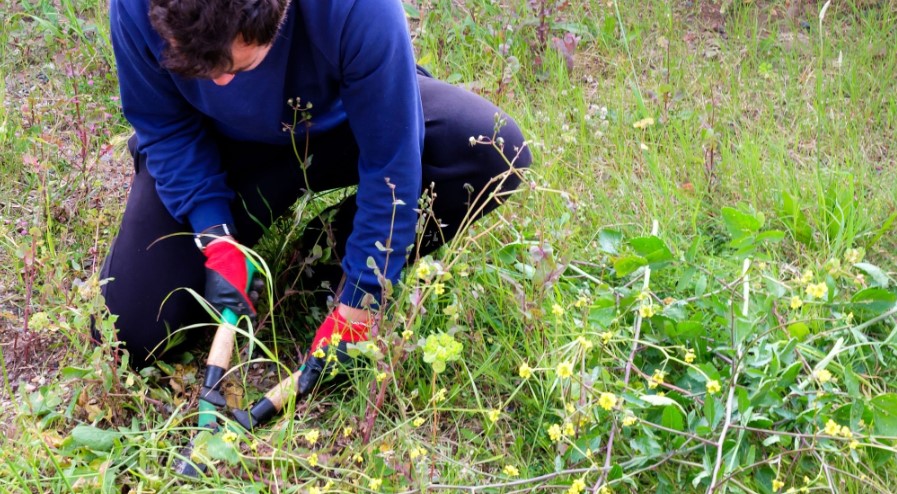
Step 4: Initiating with the Hand Weeder
With your soil prepared and protective gear in place, gently insert the tip of your hand weeder into the soil. Position it as close as possible to the base of the weed while taking care not to harm the surrounding plants in the process.

Step 5: Applying Pressure on the Handle
You can effortlessly lift the weed and its root from the soil by applying downward pressure on the handle of your weeder. In some cases, you may need to wiggle the tool slightly to loosen the weed’s grip on the earth.

Step 6: Delving Deeper When Necessary
If a weed proves particularly stubborn and refuses to budge, consider digging deeper with the hand weeder or resort to another tool, such as a trowel or a knife, to carefully sever the root. Precision is key to ensure complete removal.
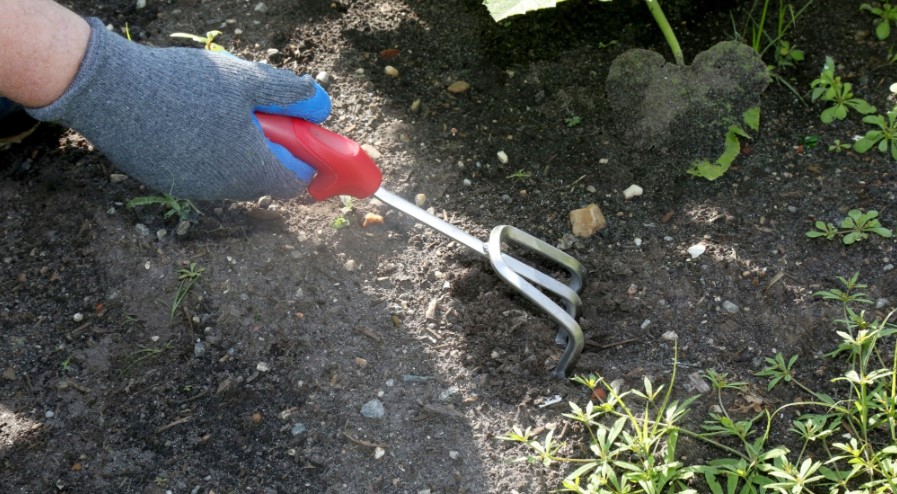
Step 7: Eliminating Lingering Root Fragments
Despite your best efforts, there may be instances where the weed’s root snaps, leaving behind fragments in the soil. Prevent these fragments from sprouting into new weeds by meticulously removing them.To keep your garden clear of weeds, you may accomplish this with your fingers, a pair of tweezers, or a tiny rake.
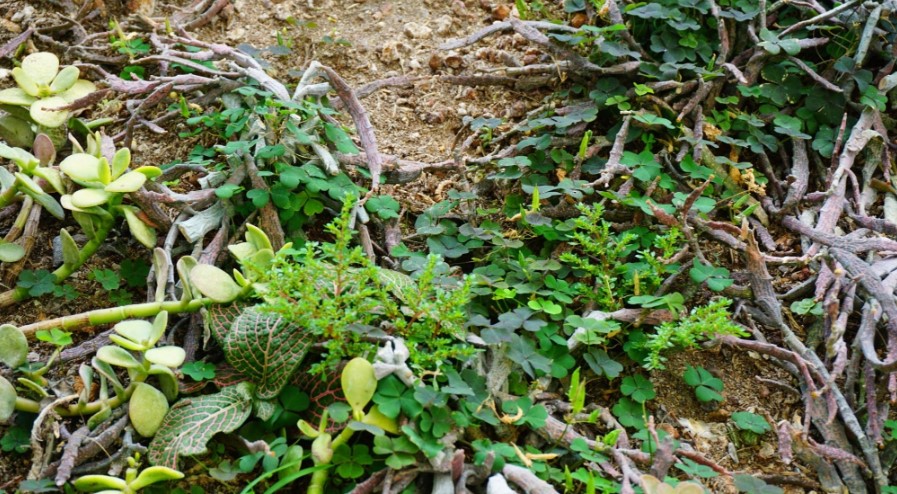
Step 8: Proper Disposal
Lastly, you can ensure that dispose of the extracted weeds correctly. Leaving them on the ground can lead to re-rooting or seed dispersal, defeating the purpose of your weeding efforts. Options for proper disposal include placing the weeds in a compost bin, sealing them in a trash bag, or burning them if such disposal methods are permitted in your area. By disposing of them responsibly, you’ll prevent the resurgence of unwanted plants in your garden and maintain its pristine allure.

Tips for safe and effective hand weeding
Hand weeding, indeed, stands as an exceptional method for nurturing the vitality and allure of your garden without resorting to harmful chemicals. Here are some further insights into these key tips to elevate the efficiency:
Choose the Right Time
The right moment to weed can make all the difference in the world. After a refreshing rainfall or a thorough watering session, the soil becomes pliant, and weeds yield more easily to your efforts. This minimizes the strain on both you and your plants. On the other hand, avoid weeding in the heat of the day or when the soil seems like dried earth since this can be harmful to the health of the creatures that inhabit your garden.
Use Proper Tools
In addition to safeguarding your hands with robust gardening gloves, it’s necessary to invest in a trowel and weeding fork designed for the task at hand. These tools will facilitate the extraction of tenacious weed roots, making your job easier and more efficient. A container, such as a bucket or wheelbarrow, is necessary for the effective collection and disposal of the weeds that are removed.
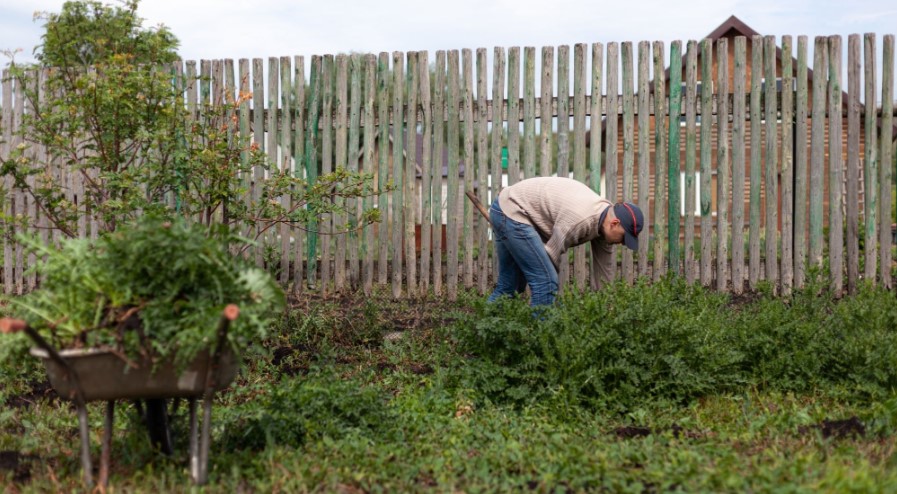
Weed Selectively
Recognize that not all plants classified as weeds are enemies in your garden. Some can play a valuable role by providing nutrients, offering shade, or creating habitats for beneficial insects and wildlife. Before uprooting any weed, take a moment to identify it and assess its potential contributions. Consider leaving such weeds undisturbed in areas where they won’t compete with your cultivated plants, like along the garden’s periphery or in less frequented corners.
Weed Regularly
The key to efficient hand weeding is consistency. To keep weeds from taking root in your garden, vigilance is necessary. Large or many weeds are more difficult to get rid of and are more likely to disseminate their seeds, which makes the issue worse. Set a goal to weed your garden at least once each week or more frequently if necessary. To prevent further development, be sure to dig up the weed’s roots, stems, and seeds in addition to the visible components.

FAQs
What are the benefits of using a weeder?
If you want to keep your garden or lawn looking neat and healthy, you might want to invest in a weeder. A weeder is a tool that helps you remove unwanted plants, such as weeds, from your soil. Weeds can compete with your desired plants for water, nutrients, and sunlight and can also harbor pests and diseases. By using a weeder, you can prevent weeds from spreading and taking over your garden.
- Efficient Weed Removal
- Preservation of Surrounding Plants
- Prevention of Weed Regrowth
- Versatility

How do I choose the right weeder for my needs?
When selecting the finest weeder for your gardening requirements, it’s important to consider a number of factors in order to ensure optimum efficacy and convenience. A fuller description of each of these crucial factors is provided below:
- The Size and Type of Your Garden or Lawn
- The Type and Density of Weeds You Have
- The Amount of Time and Effort You Want to Spend on Weeding
- The Environmental Impact of Your Weeding Method
- Your Personal Comfort and Safety

Final Words
How to use a weeder effectively and safely is a valuable skill for any gardener. Weeds can be relentless adversaries in the quest for a flourishing garden, but armed with the right knowledge and techniques, one can keep them at bay and ensure the health and beauty of the outdoor space. By following these steps in this article, a beautiful and healthy lawn can be enjoyed without risking one’s health or harming the environment.
Related Articles